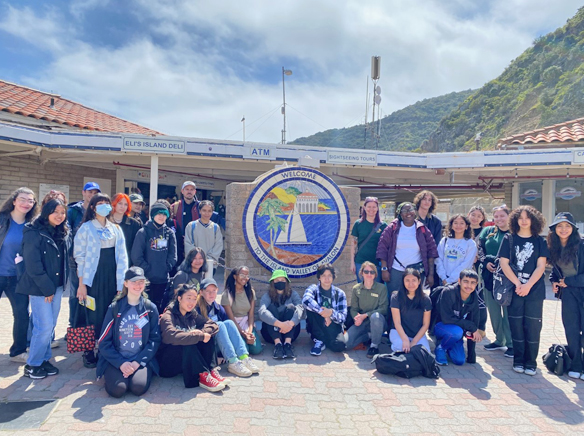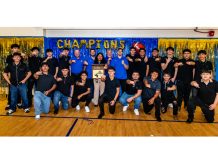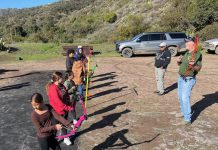
Interns learned about plant, wildlife on Catalina Island
Catalina Island Conservancy recently provided a conservation learning opportunity for teens participating in an LA Zoo program. The paid internship, offered to kids from diverse communities interested in the environment and conservation work, connects students with environmental organizations.
“We were excited to continue to build a partnership with the LA Zoo and to be able to host their students for an immersive day on the Island,” said Conservancy Sr. Education Specialist Cressita Bowman. “By having the group experience the wildlands, they were able to appreciate the Conservancy’s conservation efforts for the flora and fauna of Catalina,”
Bowman and Conservancy team members explored Whites Restoration Area with the 25 students, explaining various conservation efforts to maintain and restore biodiversity and protect unique endemic and native plant species. The exclosure provides an excellent example of how an area that is protected from nonnative herbivores after a natural disaster – in this case, Catalina’s 2007 fire – offers native species an opportunity to thrive. Safeguarding and promoting biodiversity leads to more resilient ecosystems.
During a stop at Airport in the Sky and ACE Clearwater Airfield, participants learned about wildlife on the Island. Bowman told the story of the endemic Catalina Island fox and its brush with potential extinction, the population’s recovery, and the importance of annual fox health checks and sentinel animals.
The group passed the Native Plant Nursery and learned about the importance of seed collection and proper storage, as well as the necessity of protecting native species that never needed to develop natural defenses from introduced browsing herbivores such as nonnative mule deer. When spotting flax leaf broom (Genista linifolia), students learned about the hard work of the Conservancy’s CHIRP (Catalina Habitat Improvement and Restoration Program) team in removing invasive plant species. They even saw a bald eagle.
“In order to tie into their mission of connecting with environmental and conservation work, it was important to share not only the Conservancy’s mission, but also potential career paths within the conservation field,” said Bowman. “The students were engaged, attentive, and asked great questions. It was an honor to work with them.”










